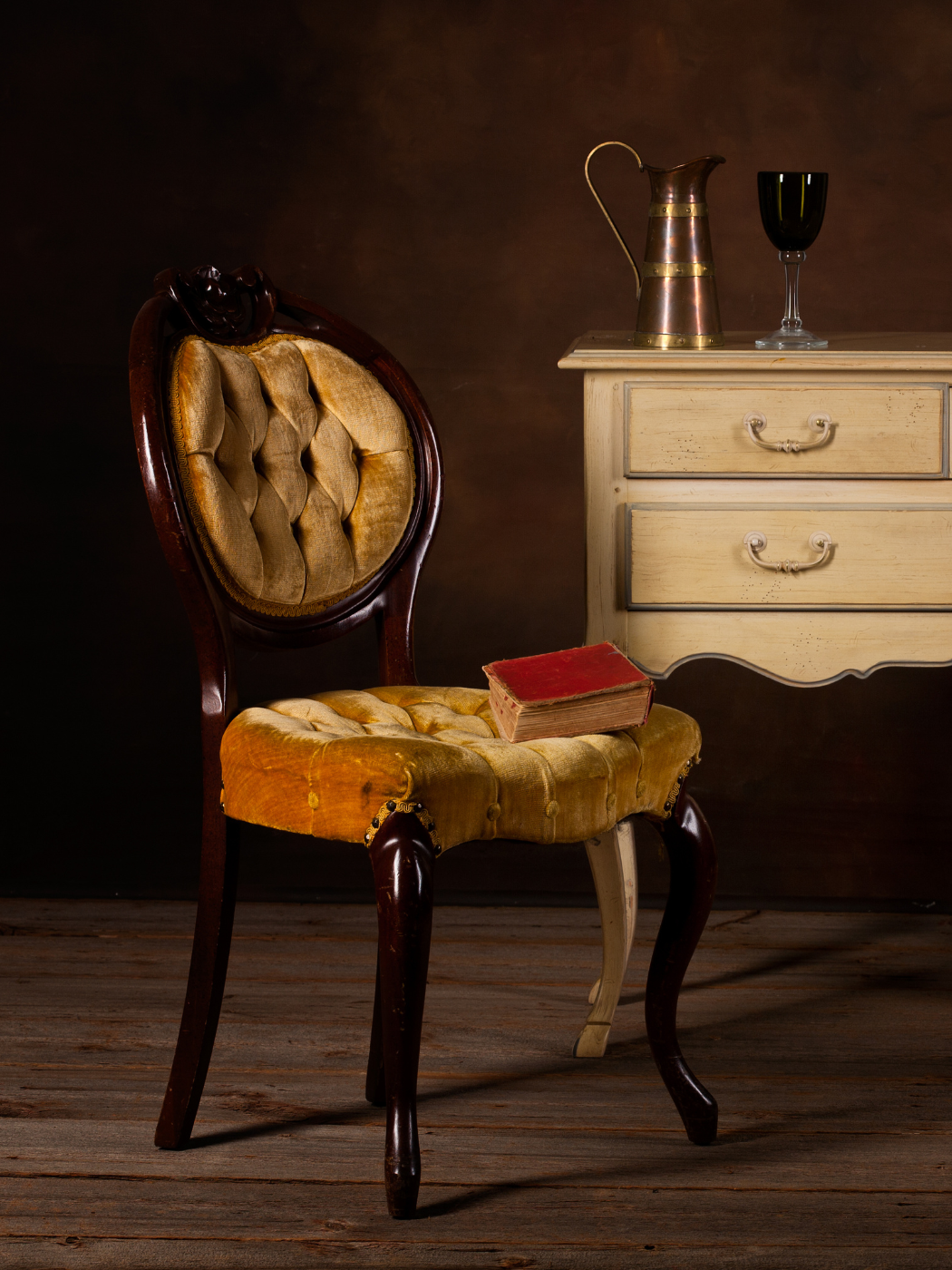
How to Take Proper Care of Your Vintage Furniture
Vintage furniture, with its unique charm and storied past, adds more than just aesthetic appeal to our homes; it connects us to history and personal narratives.
These pieces often represent a bridge between the present and the past, serving as tangible links to different eras and styles.
In my journey of collecting and cherishing vintage items, I’ve come to appreciate not just their beauty but the stories they carry. It’s not just furniture; it’s a piece of history. The importance of preserving these treasures cannot be overstated – they are artifacts of our collective cultural heritage and personal histories.
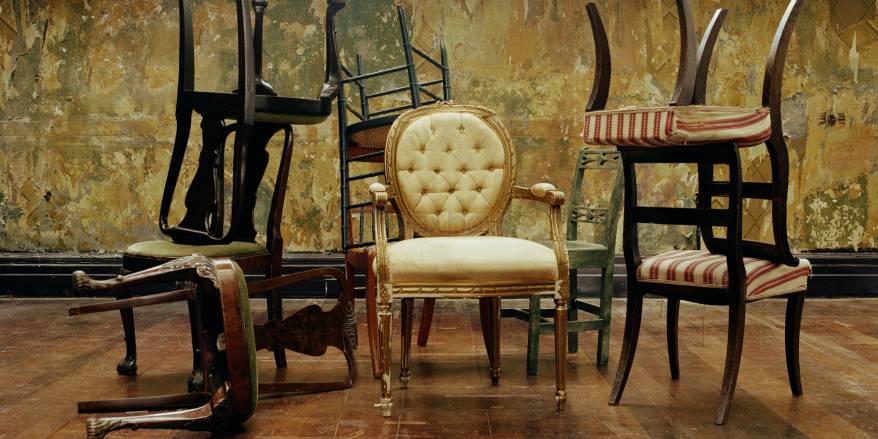
Unlocking the Charm of Vintage Furniture
When we speak of ‘vintage furniture,’ we refer to pieces that are typically between 30 to 100 years old, embodying the style and characteristics of the era they were made in. This furniture is treasured for its historical significance, showcasing the craftsmanship, design trends, and materials of its time. It’s a testament to enduring quality and an aesthetic that has stood the test of time. Unlike antique furniture, which is over 100 years old, or retro furniture, which refers to items that mimic styles from the past, vintage pieces are authentic representations of their era. They offer a window into the past, reflecting the social and cultural trends of their time, making them valuable not just in monetary terms but as cultural artifacts.
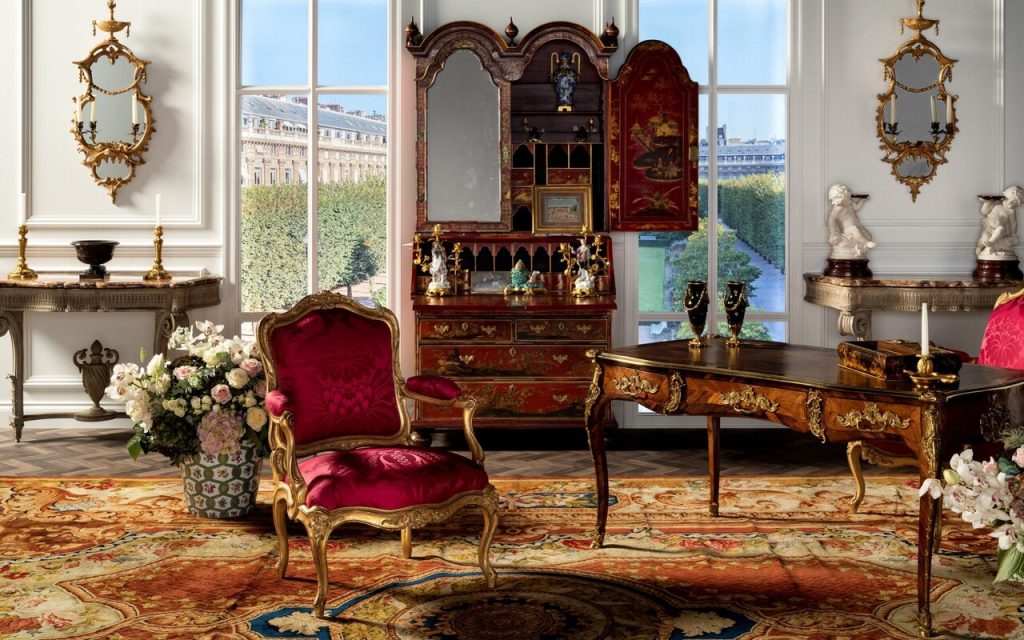
Mastering the Art of Condition Assessment
To ensure the longevity and preservation of vintage furniture, it’s essential to assess its condition periodically. Start by thoroughly inspecting for any signs of damage or wear, such as cracks, loose joints, or fading. This evaluation helps in understanding the care it requires. Identifying the material is crucial, as different materials – be it wood, metal, or upholstery – demand specific maintenance and restoration techniques. Furthermore, understanding the value of your piece, whether monetary, historical, or sentimental, is important. A family heirloom, for instance, might hold more sentimental value, necessitating extra care to preserve its legacy. Regular assessments not only maintain the furniture’s condition but also deepen our connection and appreciation for these timeless pieces.

Vintage Furniture Basic Care: Ultimate Tactics for Timeless Elegance
Appropriate Cleaning Methods
- Wooden Furniture: Use a soft, damp cloth with mild soap and water for cleaning. Avoid over-wetting the wood and dry it immediately after cleaning. Refrain from using all-purpose cleaners or abrasive substances that can damage the finish.
- Metal Pieces: Apply special metal polishes designed for the specific type of metal your furniture is made of, whether it’s brass, silver, or iron. This helps prevent tarnishing and maintains the metal’s lustre.
- Upholstered Items: Regularly vacuum with a soft brush attachment to remove dust and dirt. For stains, use upholstery cleaners that are appropriate for the fabric type, testing them first in an inconspicuous area.
Careful Handling
- Gently lift furniture when moving it, especially dining chairs and tables, to prevent weakening or damaging the joints. Avoid pulling or dragging which can misalign or break the legs and arms of the furniture.
Usage Precautions
- Place coasters under all glasses and mugs to prevent watermarks on wooden surfaces. Use placemats or tablecloths to protect dining tables during use.
- Rotate cushions and mattresses, if applicable, to distribute wear evenly. This practice helps maintain shape and comfort.
Environmental Protection
- Position furniture away from windows where direct sunlight can cause fading and deterioration of fabrics and wood finishes. Use curtains or blinds to filter light.
- Maintain a stable indoor climate; extreme fluctuations in temperature and humidity can cause wood to expand, contract, and eventually crack.
Regular Maintenance
- Dust furniture gently but regularly with a soft, lint-free cloth to avoid build-up that can scratch surfaces.
- Apply quality furniture wax to wooden pieces every few months to protect the finish and enhance the furniture’s natural beauty.
- Inspect and tighten loose screws and bolts periodically, as they can naturally loosen over time with use.
Protective Measures
- Place felt pads under décor items to prevent scratches on wood surfaces.
- Cover pieces with breathable fabric covers, especially when storing or not in use for a long period, to prevent dust accumulation and protect from environmental factors.
Mindful Placement
- Keep vintage furniture away from heat sources like radiators or vents which can cause drying and cracking.
- Ensure that furniture is placed on a stable, level surface to prevent undue stress on any part of the structure, which could lead to damage over time.
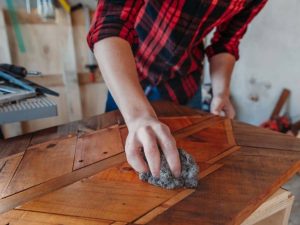
Restoration Magic: Reviving Your Vintage Furniture Pieces
Deciding between DIY restoration and professional help is a critical aspect of vintage furniture care. Simple repairs like tightening loose screws or re-gluing joints can often be done at home. However, for more complex issues like structural repairs or refinishing, seeking a professional’s expertise is advisable to preserve the piece’s integrity and value. When refurbishing, it’s important to choose materials and techniques that align with the furniture’s era to maintain authenticity. This might include using period-appropriate fabrics for upholstery or matching the original stain or paint colour for wood. The goal is to restore the piece to its former glory while respecting its historical character.
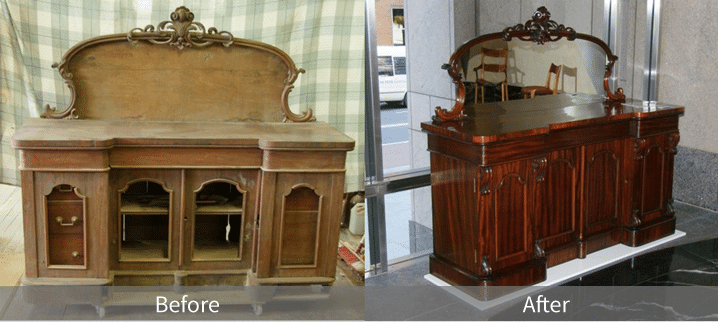
Safeguarding Your Vintage Furniture Legacy
For long-term preservation, consider the best storage solutions for your vintage pieces. Climate-controlled environments are ideal to prevent damage from fluctuating temperatures and humidity. Protective measures like dust covers can safeguard furniture from dust and pests. Regular inspections for signs of pests, like woodworms, are crucial. Additionally, insurance and proper documentation are important for valuable vintage furniture. Keep records of purchase details, restoration work, and appraisals to ensure your investment is protected. This documentation can be invaluable for insurance purposes or future resale.
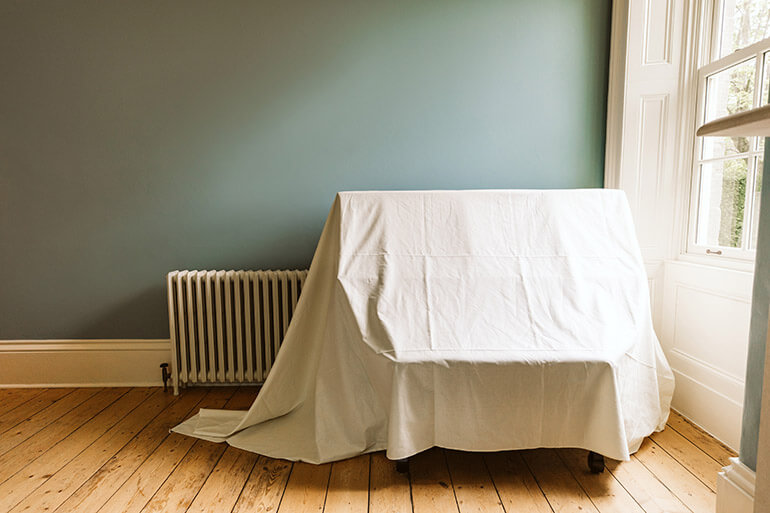
Vintage Meets Modern: Styling Your Space with Timeless Pieces
Integrating vintage furniture into modern decor can create a dynamic and personalized interior. The key is to balance the old and the new for a cohesive look. Vintage pieces can serve as stunning focal points in a room; for example, a classic Victorian sofa can add elegance and character when surrounded by more contemporary accents. When placing vintage furniture, consider both its aesthetic appeal and functionality. It’s important to ensure that these pieces are not just showpieces but also fit into the daily flow of your life. Combining textures and periods can lead to an eclectic yet harmonious space. For instance, a sleek mid-century modern table can beautifully complement a plush, modern sofa, creating a dialogue between different styles.
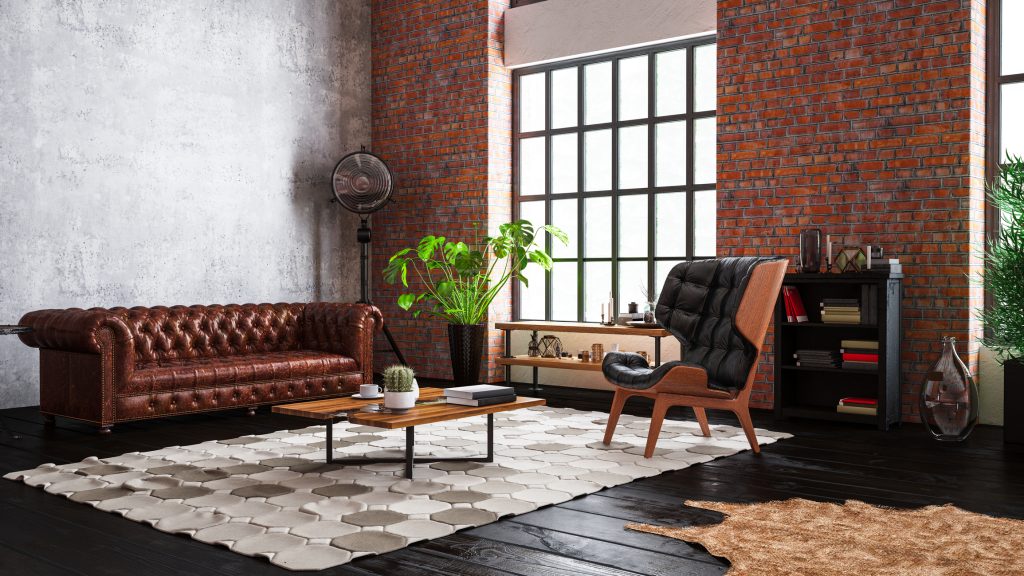
Eco-Friendly Care and Maintenance Practices
Sustainability is an inherent virtue of vintage furniture care. By maintaining and reusing these pieces, we reduce the need for new resources, thereby contributing to a more sustainable lifestyle. Eco-friendly maintenance tips include using natural cleaning agents like vinegar and olive oil for wood furniture and avoiding harsh chemicals that can harm the environment. Additionally, repairing and refurbishing vintage furniture not only preserves its history but also prevents it from ending up in landfills. Vintage furniture is a testament to the durability and longevity of well-crafted items, promoting the idea of sustainability in home decor by encouraging the reuse and appreciation of existing resources.
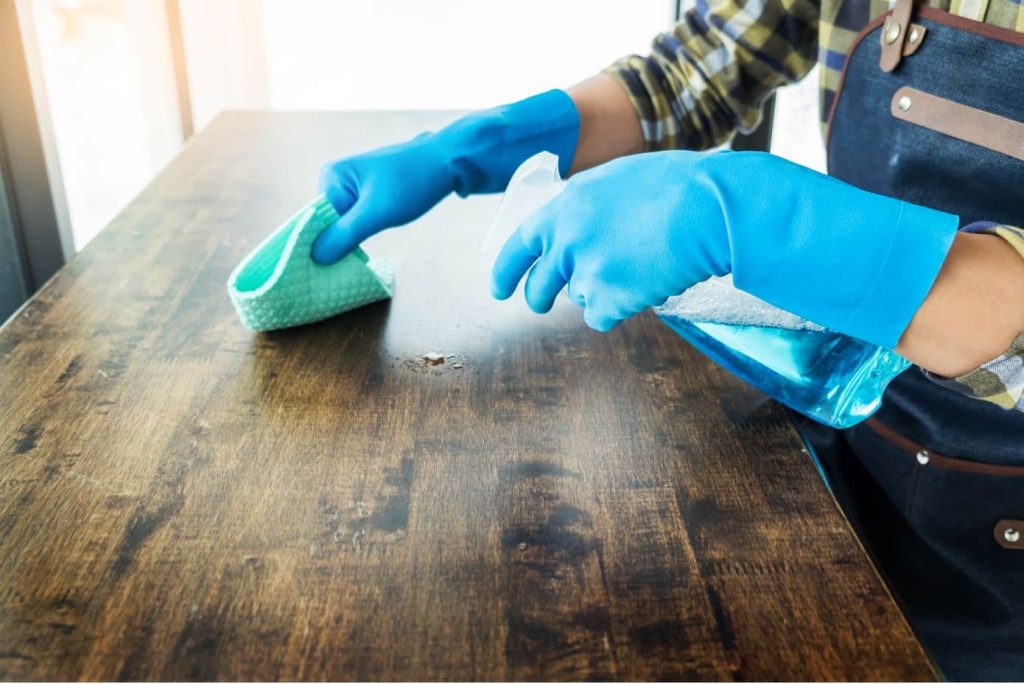
Vintage Furniture Forever: Celebrating the Journey
In this journey through the world of vintage furniture, we’ve explored the importance of preserving these timeless pieces, understanding their unique characteristics, and ensuring they continue to add beauty and history to our homes. From basic care and maintenance to restoration and protection, each step is vital in cherishing these treasures. As we integrate them into our modern lives, we not only honour their past but also contribute to a more sustainable future. I encourage you to cherish your vintage pieces, whether they are family heirlooms or flea market finds, and invite you to share your own stories and tips about your vintage furniture. Together, we can continue to appreciate and preserve these links to our past, making them a cherished part of our present and future.
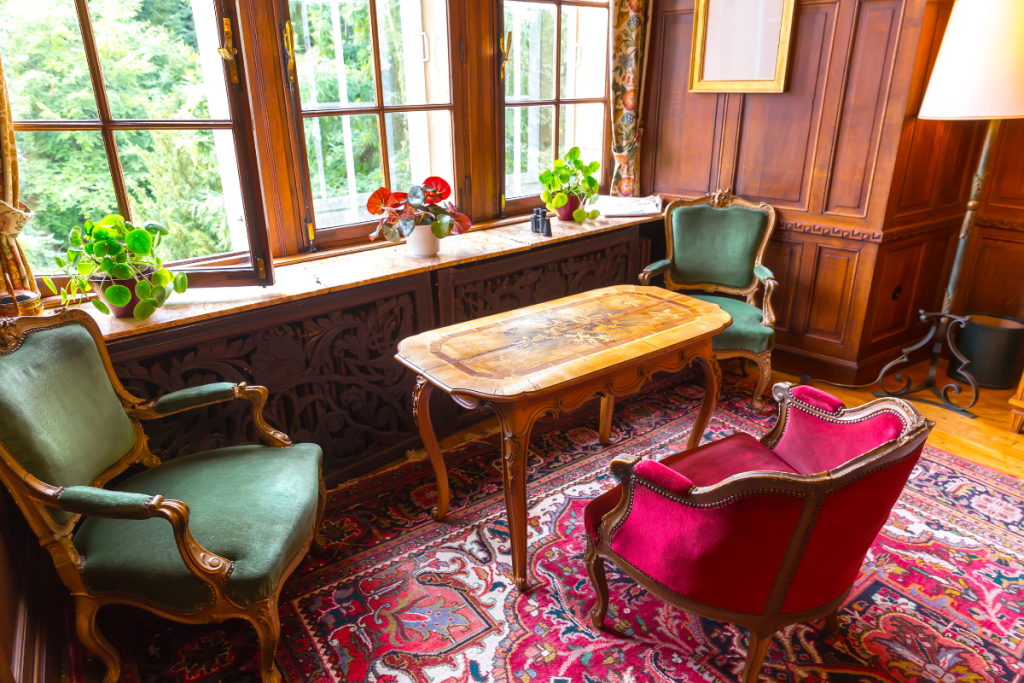
Frequently Asked Questions
Yes, extendable dining tables are a wise investment for those who value versatility and functionality in their furniture. They adapt to different numbers of guests, ensuring you always have enough dining space and are designed to be durable and stylish.
Extension dining tables are designed to be durable and withstand the wear and tear of regular use. However, their longevity can depend on the quality of the construction materials and the mechanism used for extension. High-quality extendable tables with robust mechanisms can last for many years, offering great value over time.
Yes, most ottomans are designed to be strong enough
Yes, extendable dining tables are available in a wide range of modern designs, incorporating sleek lines, contemporary materials, and innovative extension mechanisms. These modern tables can blend seamlessly with contemporary decor, offering functionality without sacrificing style.
Coconut oil is not usually advised for antique furniture as it can spoil and possibly damage the wood. It’s better to stick with products intended for antique furniture preservation.
